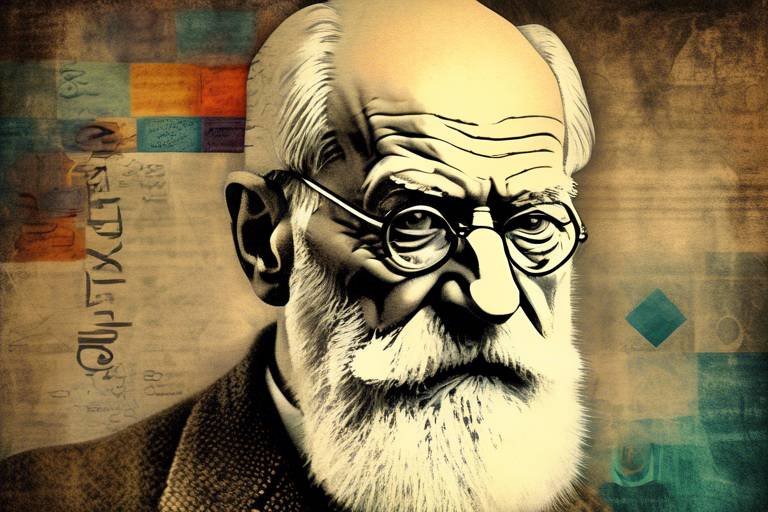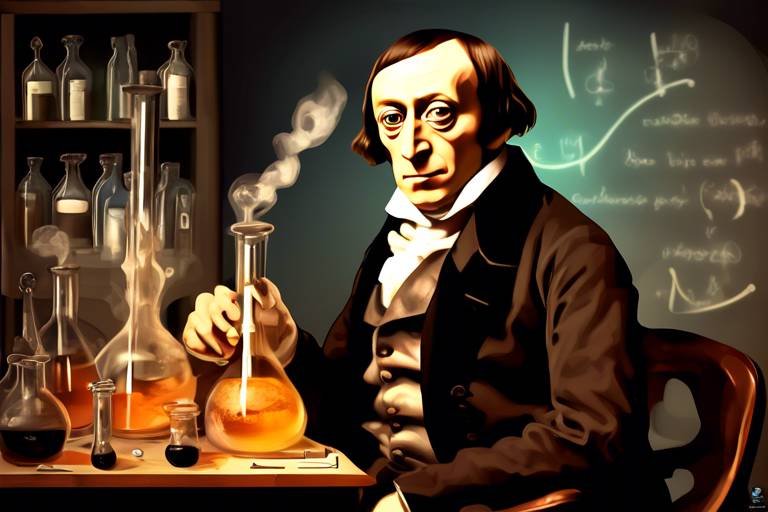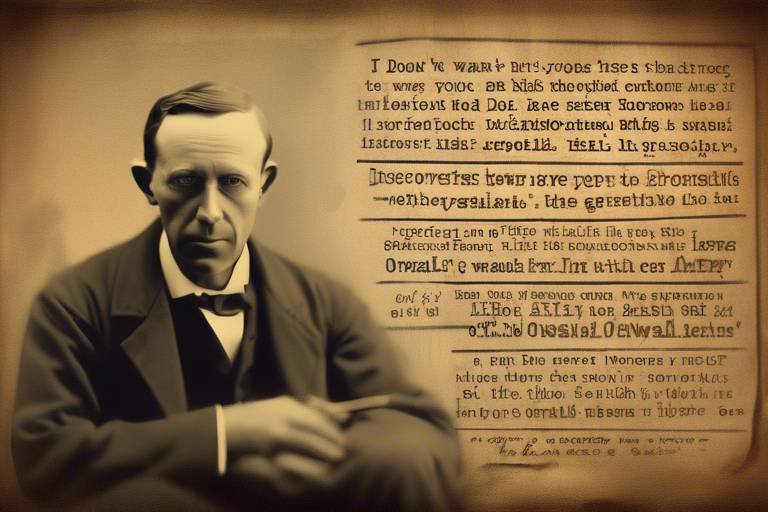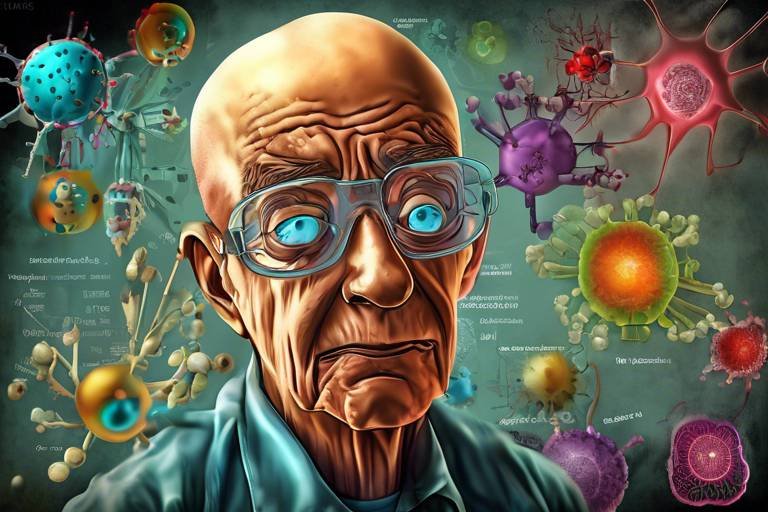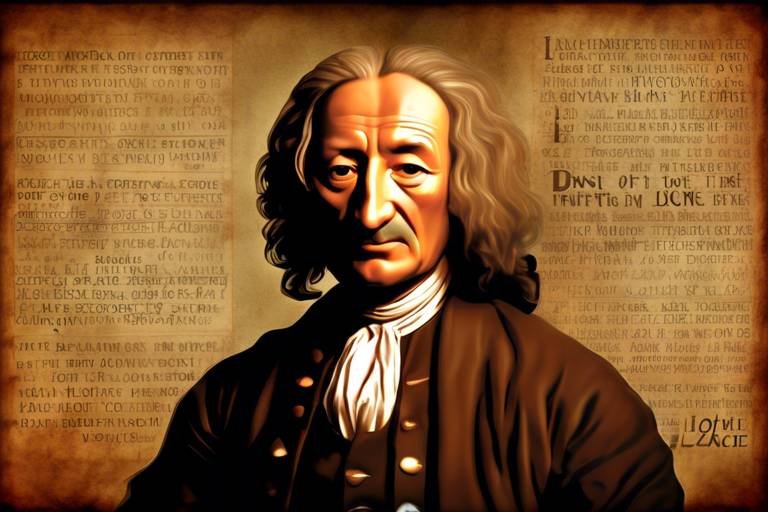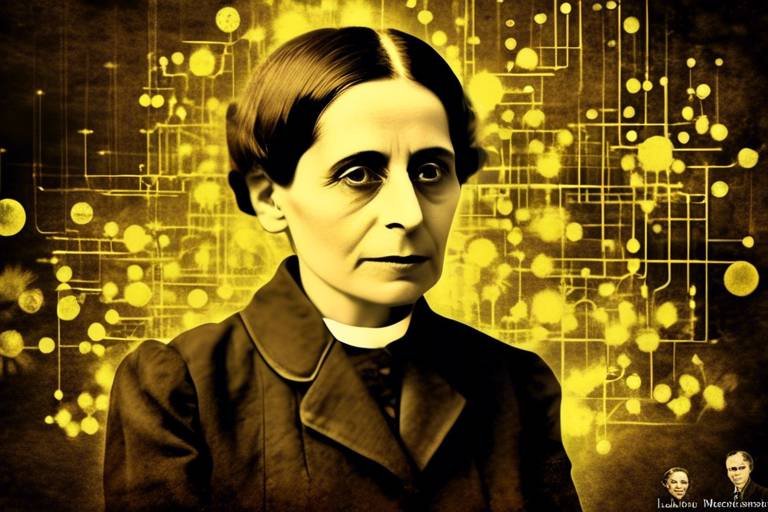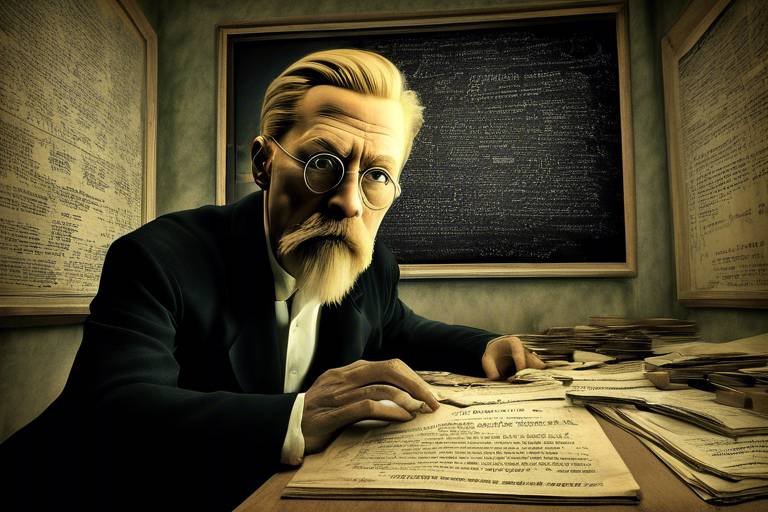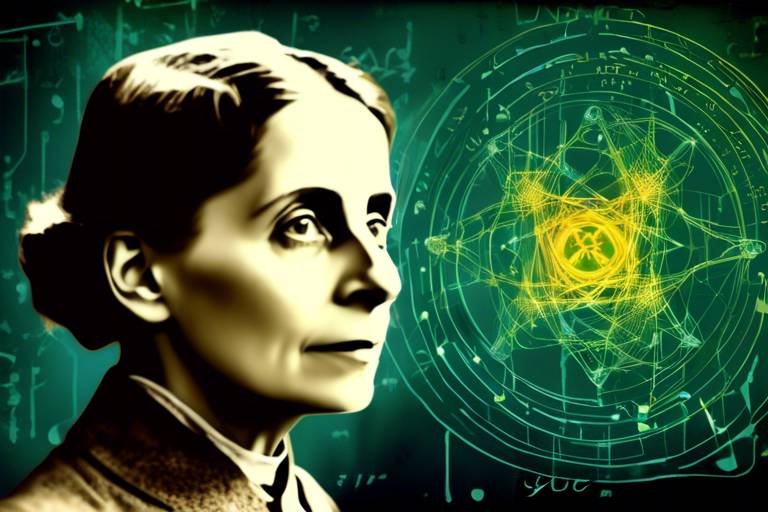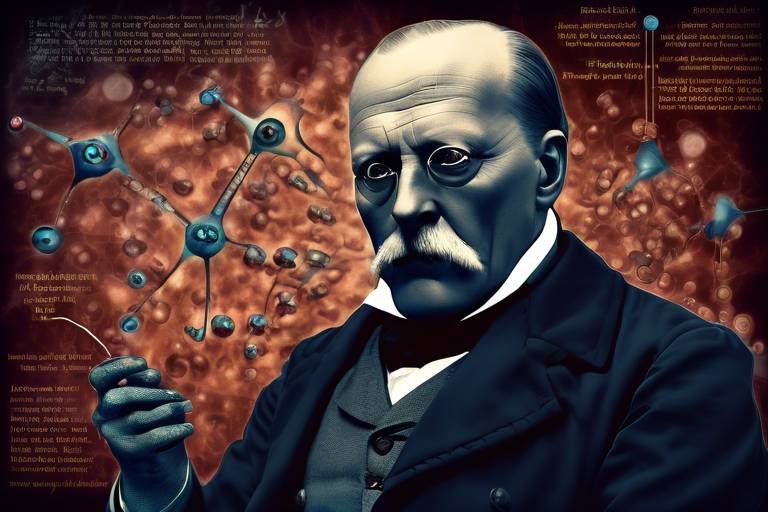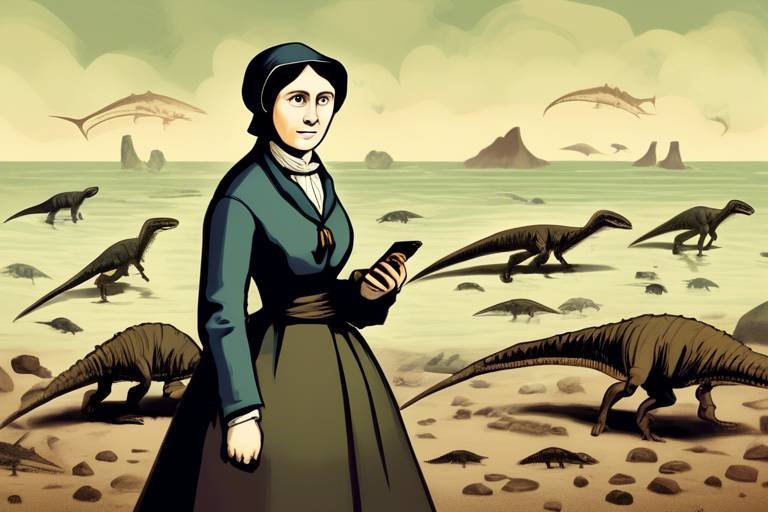The Contributions of Michael Faraday to Electromagnetism
Michael Faraday is often celebrated as one of the most influential scientists in the history of electromagnetism. His journey from a humble background to becoming a pioneer in science is nothing short of inspiring. Faraday's contributions were not just mere experiments; they were the building blocks that laid the foundation for modern electrical engineering and physics. Imagine a world without electricity—no smartphones, no computers, no electric lights. Faraday's work made all of this possible, and his discoveries resonate in our daily lives even today.
Born on September 22, 1791, in Newington Butts, England, Faraday was the son of a blacksmith. His family struggled financially, which meant that formal education was a luxury he could not afford. Instead, he became an apprentice to a bookbinder, where he developed a passion for reading and learning. This self-directed education ignited a flame of curiosity that would eventually lead him to the Royal Institution of Great Britain, where he would conduct his most significant experiments. Faraday's story is a testament to the power of determination and the pursuit of knowledge.
One of Faraday's most notable achievements is his formulation of Faraday's Law of Induction. This groundbreaking principle states that a changing magnetic field can induce an electric current in a conductor. This discovery was revolutionary, as it paved the way for the development of generators and transformers. Just imagine the thrill of realizing that you could generate electricity simply by moving a magnet near a coil of wire! This principle is still taught in schools today and remains a cornerstone of electromagnetism.
Faraday's work extended beyond just induction; he introduced the concept of electromagnetic fields. Before Faraday, electricity and magnetism were viewed as separate entities. He demonstrated that these forces were intertwined, and his ideas influenced future scientists, including the renowned James Clerk Maxwell. Maxwell's equations, which describe how electric and magnetic fields interact, were built upon the foundation that Faraday established. It’s like building a skyscraper: Faraday laid the groundwork, and others constructed the towering edifice of electromagnetic theory.
In addition to his theoretical contributions, Faraday was a master experimenter. He conducted numerous experiments that demonstrated the relationship between electricity and magnetism, leading to the formulation of his law of induction. His meticulous approach to experimentation was crucial in validating his theories. For instance, he showed that when a magnet is moved through a coil of wire, it generates an electric current. This was a revolutionary idea at the time, and it challenged existing notions about electricity.
Faraday's influence didn’t stop with his own discoveries; he inspired a generation of scientists who followed in his footsteps. His work was a catalyst for advancements in electromagnetism, and his legacy can be seen in the technologies that we rely on today. The electric motor, the generator, and even the telegraph owe their existence to the principles that Faraday uncovered. It’s fascinating to think that a single individual's curiosity could lead to such monumental changes in the world.
Beyond electromagnetism, Faraday made significant contributions to the field of electrochemistry, particularly through his research on electrolysis. He discovered that electric currents could drive chemical reactions, which laid the groundwork for modern electrochemical processes. This understanding has implications in various industries, from battery technology to metal plating. The impact of his work in electrolysis is profound and continues to drive innovation in chemical engineering.
Faraday's inventions were not limited to theoretical concepts; he created practical devices that showcased the real-world applications of his research. Among his most notable inventions is the Faraday Cage, a device that protects sensitive electronic equipment from external electric fields. This invention is still in use today, demonstrating Faraday's deep understanding of electromagnetic principles and their practical implications. It’s akin to creating an umbrella that shields you from the rain; Faraday provided a safeguard for technology in an increasingly electrified world.
Michael Faraday's legacy is profound and enduring. Numerous institutions and awards bear his name, reflecting the immense impact he had on science and technology. His contributions to electromagnetism not only shaped the scientific landscape of his time but also continue to influence modern advancements. Every time we flip a switch or charge our devices, we owe a debt of gratitude to Faraday and his groundbreaking work. His story is a reminder that curiosity, perseverance, and innovation can change the world.
- What was Michael Faraday's most significant contribution to science?
Faraday's most significant contribution is his formulation of Faraday's Law of Induction, which describes how a changing magnetic field can induce an electric current. - How did Faraday's background influence his work?
Faraday's humble beginnings and self-education fostered a deep curiosity and determination that propelled him into groundbreaking scientific exploration. - What is the Faraday Cage, and why is it important?
The Faraday Cage is a device that protects sensitive electronic equipment from external electric fields, showcasing Faraday's understanding of electromagnetic principles.

Early Life and Education
Michael Faraday was born on September 22, 1791, in a small village named Newington Butts, located in London, England. His beginnings were anything but glamorous; he was the son of a blacksmith and grew up in a modest household. Faraday's early life was marked by financial struggles, which meant that formal education was a luxury his family could not afford. Instead, he was largely self-taught, developing a passion for science through the books he read and the experiences he encountered.
At the age of 14, Faraday became an apprentice to a local bookbinder, where he had access to a variety of texts, including works on science and philosophy. This opportunity was pivotal, as it allowed him to explore subjects that ignited his curiosity. Faraday's thirst for knowledge was insatiable; he would often read the books he bound, absorbing the information like a sponge. His early exposure to scientific literature, particularly the works of Isaac Newton and Joseph Priestley, laid a crucial foundation for his future discoveries.
After completing his apprenticeship, Faraday attended lectures by Priestley, an influential chemist who would become his mentor. Priestley's teachings opened Faraday's eyes to the world of chemistry and electricity, inspiring him to pursue a career in science. He began working at the Royal Institution of Great Britain in 1813, where he initially served as a laboratory assistant. It was here that Faraday's talents truly began to shine. His hands-on experience, combined with the guidance of esteemed scientists, propelled him into the forefront of scientific research.
Faraday's lack of formal education did not hinder his progress; in fact, it fueled his determination to prove himself in a field dominated by those with academic credentials. His relentless pursuit of knowledge and understanding led him to develop groundbreaking theories and experiments. Faraday's journey from a humble background to becoming one of the most influential scientists in history is a testament to the power of self-education and passion for discovery.
As we delve deeper into Faraday's contributions to electromagnetism, it's essential to recognize how his early life experiences shaped his scientific outlook. The challenges he faced and the knowledge he gained during his formative years were instrumental in molding the mind of a genius who would go on to revolutionize our understanding of electricity and magnetism.
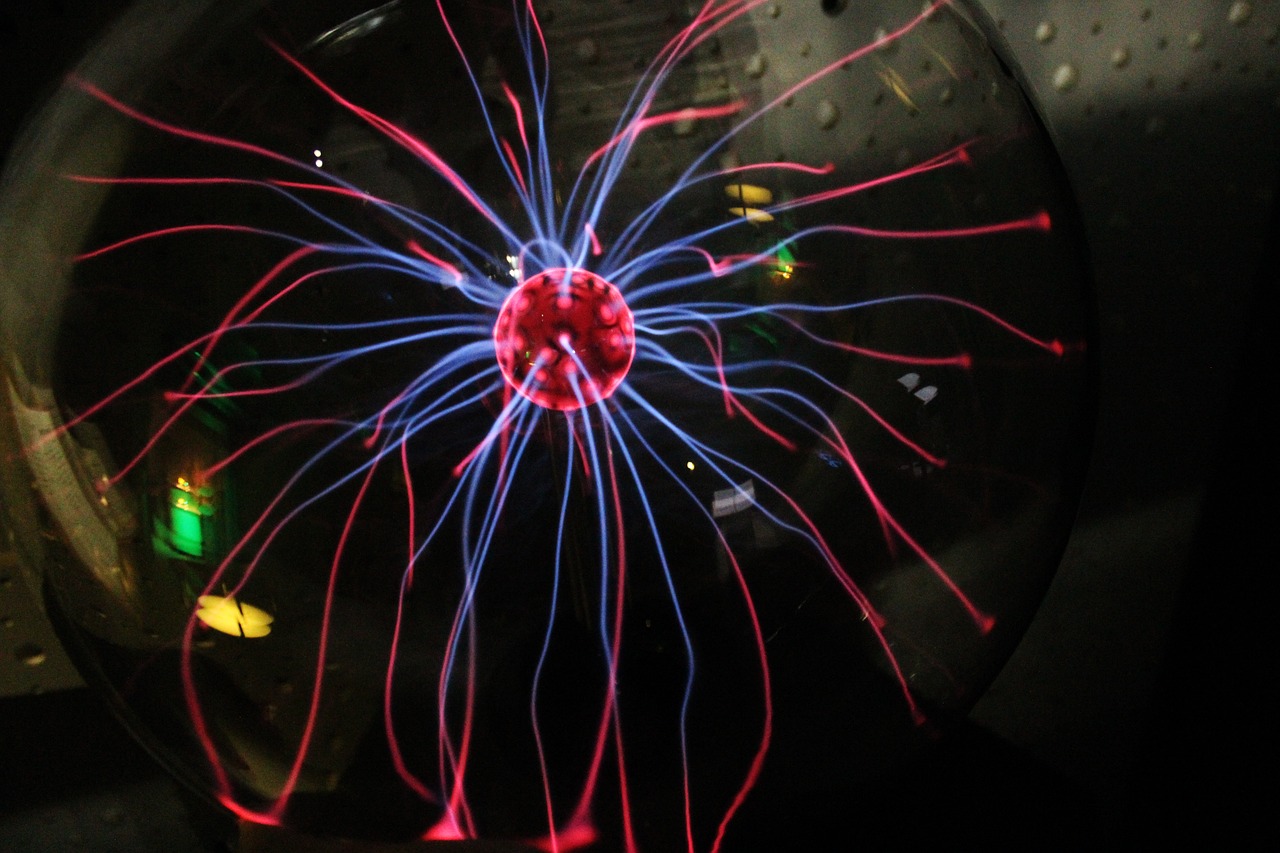
Faraday's Law of Induction
Faraday's Law of Induction is not just a scientific principle; it’s a cornerstone of electromagnetism that has reshaped our understanding of electricity and magnetism. Imagine a world where electric currents could be generated without a direct connection to a power source. This was the revolutionary idea that Michael Faraday introduced in the early 19th century. His law states that a changing magnetic field within a closed loop induces an electric current in that loop. This principle is the basis for many modern technologies, from electric generators to transformers.
To understand the significance of Faraday's Law, let's break it down into its core components. The law can be summarized in two key points:
- Magnetic Flux Change: The amount of magnetic field passing through a given area, known as magnetic flux, must change to induce an electric current.
- Induced Electromotive Force (EMF): The induced current is proportional to the rate of change of the magnetic flux. The faster the change, the greater the induced current.
This relationship can be expressed mathematically as follows:
EMF -dΦ/dt
Where EMF is the electromotive force, Φ represents the magnetic flux, and t is time. The negative sign indicates the direction of the induced current, which opposes the change in magnetic flux, a principle known as Lenz's Law.
Faraday's experiments were groundbreaking. He famously demonstrated his law using simple apparatus: a coil of wire and a magnet. By moving the magnet in and out of the coil, he was able to show that an electric current flowed through the wire whenever the magnetic field changed. This was a pivotal moment in physics, revealing the intimate connection between electricity and magnetism.
The implications of Faraday's Law of Induction extend far beyond the laboratory. It laid the groundwork for the development of numerous technologies that power our modern world. Here are just a few:
- Electric Generators: Devices that convert mechanical energy into electrical energy using Faraday's principle.
- Transformers: Equipment that changes the voltage of electricity for efficient transmission over long distances.
- Induction Cooktops: Kitchen appliances that use electromagnetic induction to heat pots and pans directly.
Faraday's contributions didn't stop with the formulation of his law. His work inspired future scientists, including the renowned physicist James Clerk Maxwell, who expanded on Faraday's findings to create a comprehensive theory of electromagnetism. Maxwell's equations, which describe how electric and magnetic fields interact, owe much to Faraday's pioneering work.
In conclusion, Faraday's Law of Induction is a testament to the power of curiosity and experimentation. Faraday, with his humble beginnings, transformed our understanding of the natural world and set the stage for the technological advancements we enjoy today. His legacy is a reminder that sometimes, the simplest experiments can lead to the most profound discoveries.
- What is Faraday's Law of Induction? Faraday's Law states that a changing magnetic field induces an electric current in a closed loop.
- How does Faraday's Law apply to modern technology? It is fundamental in the operation of electric generators, transformers, and various electrical devices.
- Who were the key figures influenced by Faraday's work? Notable scientists like James Clerk Maxwell built upon Faraday's findings to develop the theory of electromagnetism.
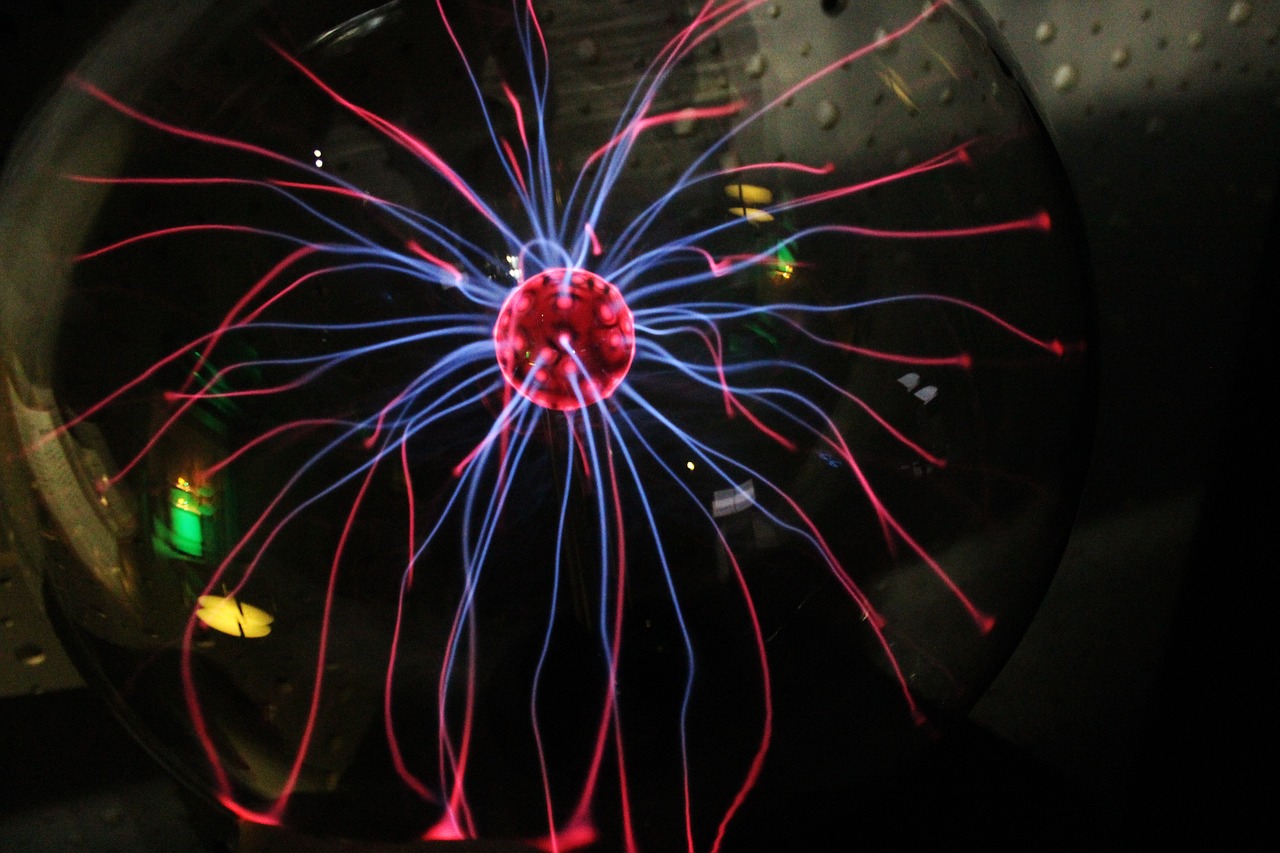
The Concept of Electromagnetic Fields
Imagine a world where electricity and magnetism are not just abstract concepts but are intertwined like the threads of a beautifully woven tapestry. This was the revolutionary idea that Michael Faraday introduced when he conceptualized electromagnetic fields. Faraday's insight transformed our understanding of how electric currents and magnetic forces interact, laying the groundwork for modern physics and engineering.
The essence of electromagnetic fields lies in their ability to describe the forces that electric charges exert on one another, as well as the influence of magnetic fields on those charges. Faraday proposed that a changing magnetic field could generate an electric current, a groundbreaking notion that was not just theoretical but could be observed through his meticulous experiments. This relationship is often summarized in the phrase: "a changing magnetic field creates an electric field." It’s akin to watching a dance where each partner influences the other's movements, creating a complex yet harmonious performance.
Faraday's work led to the realization that electromagnetic fields are not just confined to wires and magnets; they permeate space, affecting everything around them. To illustrate this, consider the following key points:
- Electric Field: This is a region around a charged particle where other charged particles experience a force. It's like an invisible shield that influences how nearby charges behave.
- Magnetic Field: This is produced by moving electric charges (like those in a current-carrying wire) and affects other moving charges in its vicinity. Think of it as the invisible force that guides the motion of charged particles.
- Electromagnetic Field: When you combine electric and magnetic fields, you get an electromagnetic field, which propagates through space as electromagnetic waves (like light). It's the ultimate symphony of nature!
Faraday's introduction of these concepts not only revolutionized electromagnetism but also paved the way for future scientists. His theories influenced the work of James Clerk Maxwell, who later formulated the famous Maxwell's equations, encapsulating the behavior of electromagnetic fields in a comprehensive mathematical framework. These equations are fundamental to understanding everything from radio waves to the functioning of modern electronics.
In essence, Faraday opened a door to a new dimension of science. His work on electromagnetic fields was not merely about understanding the forces at play but also about harnessing them for practical applications. Today, we see the fruits of his labor in countless technologies, from the electricity that powers our homes to the intricate communications systems that keep us connected. Faraday's legacy is a testament to the power of curiosity and the relentless pursuit of knowledge, reminding us that sometimes, the most profound discoveries come from exploring the unseen.
Q1: What is an electromagnetic field?
A1: An electromagnetic field is a physical field produced by electrically charged objects. It affects the behavior of charged objects in the vicinity of the field, influencing both electric and magnetic forces.
Q2: How did Faraday contribute to the understanding of electromagnetic fields?
A2: Faraday's experiments demonstrated the relationship between electricity and magnetism, leading to the formulation of his law of induction, which describes how a changing magnetic field can induce an electric current.
Q3: Why are electromagnetic fields important in modern technology?
A3: Electromagnetic fields are fundamental to many technologies, including electric motors, generators, wireless communication, and various electronic devices, making them essential for modern life.

Experiments with Magnetic Fields
Michael Faraday, a name that resonates through the corridors of scientific history, was not just a thinker but a true experimenter. His fascination with magnetic fields led him to conduct a series of groundbreaking experiments that would change the way we understand electricity and magnetism forever. Imagine a world where the invisible forces of nature could be harnessed and understood; that was the world Faraday envisioned and worked tirelessly to explore.
One of his most famous experiments involved the use of a coil of wire and a magnet. Faraday discovered that when he moved a magnet in and out of a coil, an electric current was induced in the wire. This phenomenon, now known as electromagnetic induction, was revolutionary. It was as if he had unlocked a hidden door to the universe's secrets, revealing the dance between electricity and magnetism. To visualize this, think of the coil as a silent audience, and the magnet as a performer on stage, creating a stunning show of energy that captivated Faraday's imagination.
Faraday didn’t stop there. He meticulously documented his findings, creating detailed notes and sketches that illustrated his experiments. His work culminated in what we now call Faraday's Law of Induction, which states that a change in magnetic field within a closed loop induces an electromotive force (EMF) in the wire. This fundamental principle laid the groundwork for many modern technologies, including electric generators and transformers. The implications of his discoveries were monumental, enabling the birth of the electrical age.
To better understand the impact of Faraday's experiments, consider the following table that outlines some key experiments and their outcomes:
| Experiment | Description | Outcome |
|---|---|---|
| Magnet and Coil | Moving a magnet through a coil of wire. | Induced electric current. |
| Electromagnetic Rotation | Using a current-carrying wire in a magnetic field. | Demonstrated the principle of the electric motor. |
| Electrolysis | Investigating the effects of electricity on chemical compounds. | Foundation for electrochemistry. |
Faraday's experiments were not just about observation; they were about understanding the relationship between different forces. His innovative approach to science emphasized the importance of hands-on experimentation, a practice that is still a cornerstone of scientific inquiry today. Faraday's ability to visualize complex interactions in simple terms made his findings accessible to both scientists and the general public.
In conclusion, Michael Faraday’s experiments with magnetic fields were the catalyst for a revolution in understanding electromagnetism. His work demonstrated that electricity and magnetism are not isolated phenomena but are intricately linked, a concept that continues to shape our technological landscape. Without his relentless curiosity and experimental spirit, who knows where we would be today in our quest to harness the power of electricity?
- What is Faraday's Law of Induction?
Faraday's Law of Induction states that a change in magnetic field within a closed loop induces an electromotive force (EMF) in the wire, leading to the generation of electric current. - Why are Faraday's experiments important?
Faraday's experiments laid the foundation for modern electromagnetism and electrical engineering, influencing technologies such as electric motors, generators, and transformers. - How did Faraday contribute to electrochemistry?
Faraday's research on electrolysis helped establish the principles of electrochemistry, demonstrating how electric currents can drive chemical reactions.

Impact on Future Scientists
Michael Faraday's groundbreaking work in electromagnetism didn't just end with his own discoveries; it laid a foundation that would inspire countless future scientists. His innovative ideas and experiments opened the door to a new realm of understanding regarding the relationship between electricity and magnetism. Can you imagine a world where the principles of electromagnetism were never uncovered? It would be like trying to navigate a ship without a compass—utterly lost!
One of the most notable scientists influenced by Faraday's work was James Clerk Maxwell. Maxwell took Faraday's findings and transformed them into a comprehensive theory of electromagnetism, known as Maxwell's Equations. These equations not only unified electricity and magnetism but also paved the way for modern physics. Without Faraday's initial insights, Maxwell's work might have been a mere figment of imagination!
Faraday’s experiments, particularly his law of induction, also set the stage for future technological advancements. His ideas about electromagnetic fields were revolutionary and inspired scientists such as Heinrich Hertz and Nikola Tesla. Hertz's work on radio waves and Tesla's contributions to alternating current (AC) systems were direct extensions of Faraday's principles. It's fascinating to think how Faraday's curiosity and relentless experimentation rippled through time, influencing innovations that shaped our daily lives.
Moreover, the educational impact of Faraday's work cannot be overstated. He was not only a brilliant scientist but also an exceptional teacher. His ability to communicate complex ideas in an understandable way inspired a generation of physicists and chemists. Numerous educational institutions have adopted his teaching methods, emphasizing the importance of hands-on experimentation and critical thinking. This approach has become a vital part of the scientific method, encouraging students to explore and question the world around them.
In summary, the impact of Michael Faraday on future scientists is profound and far-reaching. His contributions established a framework that countless researchers have built upon, propelling the field of electromagnetism into the modern age. The legacy of his work continues to inspire and challenge scientists today, reminding us that curiosity and perseverance can lead to groundbreaking discoveries.
- What is Faraday's Law of Induction?
Faraday's Law of Induction states that a change in magnetic field within a closed loop induces an electric current in the wire. - How did Faraday contribute to electrochemistry?
Faraday's research on electrolysis revealed the relationship between electricity and chemical reactions, forming the basis of electrochemistry. - What is the Faraday Cage?
The Faraday Cage is a structure that blocks external electric fields, protecting sensitive electronic equipment from interference. - Why is Faraday considered a pioneer in electromagnetism?
Faraday's innovative experiments and discoveries laid the groundwork for the field of electromagnetism, influencing many future scientists and technologies.
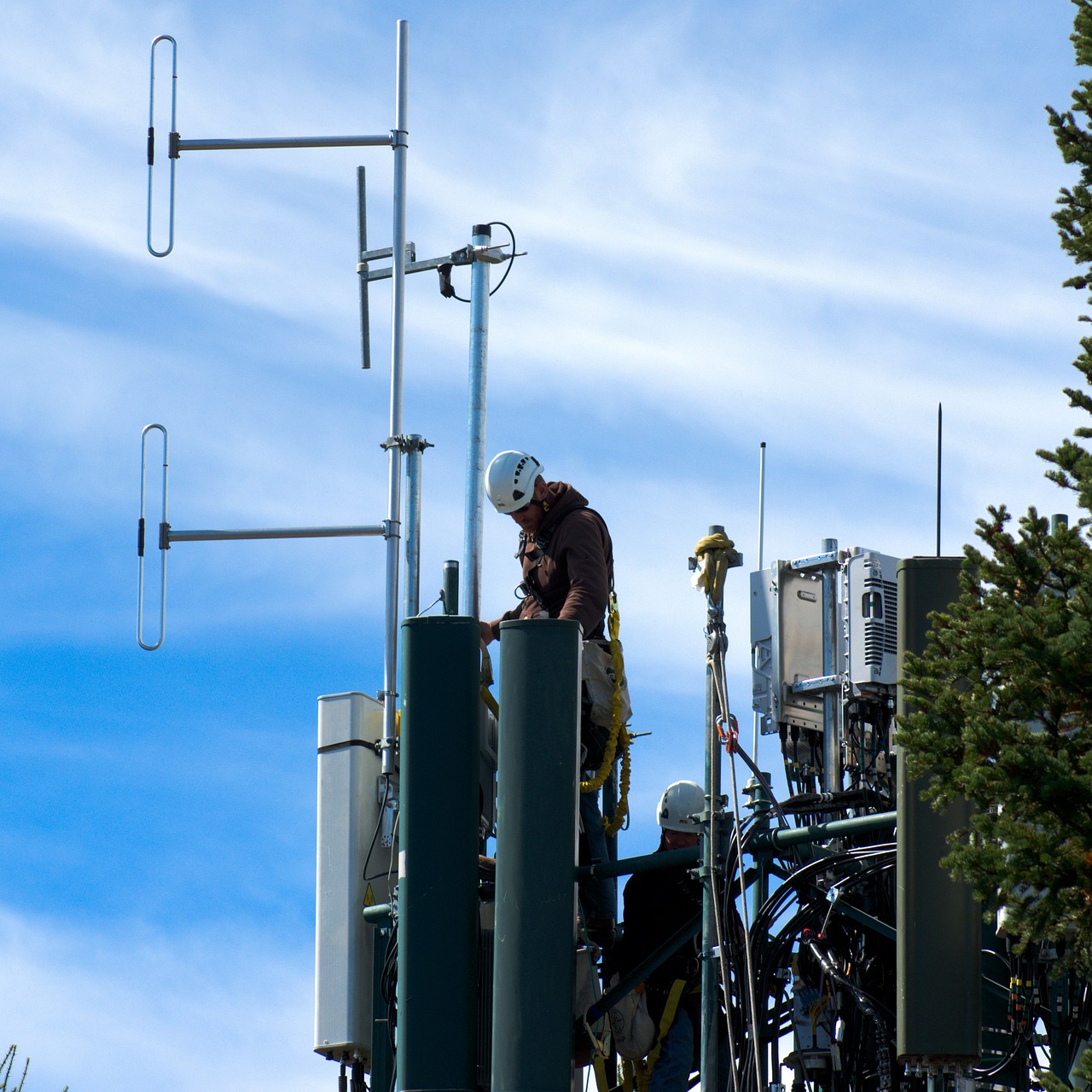
Electrolysis and Chemical Reactions
Michael Faraday's groundbreaking research on electrolysis significantly advanced our understanding of chemical reactions in electric fields. Imagine a world where the invisible forces of electricity could manipulate matter at a molecular level—this was the world Faraday unveiled through his experiments. He meticulously explored how electric currents could cause chemical changes, laying the groundwork for the field of electrochemistry.
Faraday's experiments revealed that when an electric current passes through a solution, it can cause substances to break down into their elemental parts. This process is not just a scientific curiosity; it has practical applications that touch our everyday lives. For instance, electrolysis is crucial in industries for extracting metals from ores, purifying metals, and even in the production of chlorine and hydrogen gas.
To better understand the process of electrolysis, let's break it down into its key components:
- Electrolyte: A substance that conducts electricity when dissolved in water or melted, allowing ions to move freely.
- Electrodes: Conductive materials (usually metals) placed in the electrolyte, where the reactions occur. The anode is positive, while the cathode is negative.
- Current Flow: The flow of electric current through the electrolyte causes ions to migrate towards the electrodes, leading to chemical reactions.
Faraday also formulated two essential laws of electrolysis, which are pivotal to understanding this phenomenon:
| Faraday's First Law | The amount of substance altered at an electrode during electrolysis is directly proportional to the quantity of electricity that passes through the electrolyte. |
|---|---|
| Faraday's Second Law | The amounts of different substances altered at the electrodes are proportional to their equivalent weights. |
These laws not only provide a mathematical framework for electrolysis but also have profound implications in various scientific fields. Faraday's work paved the way for future scientists to explore the interactions between electricity and chemical reactions, leading to innovations in battery technology, electroplating, and even in the burgeoning field of renewable energy sources.
In essence, Faraday's contributions to our understanding of electrolysis and chemical reactions exemplify how a single individual's curiosity and dedication can illuminate the path for future generations. His legacy continues to inspire chemists and physicists alike, reminding us that the interplay between electricity and chemistry is not just a scientific principle but a gateway to countless technological advancements.
- What is electrolysis? Electrolysis is a chemical process that uses an electric current to drive a non-spontaneous reaction, typically involving the decomposition of a compound into its elements.
- How did Faraday contribute to electrochemistry? Faraday's research established the foundational laws of electrolysis, which describe how electric currents affect chemical reactions.
- What are some applications of electrolysis? Electrolysis is used in various applications, including metal extraction, electroplating, and the production of gases like hydrogen and chlorine.

Inventions and Innovations
Michael Faraday was not just a theoretical thinker; he was a prolific inventor whose creations laid the groundwork for many modern technologies. One of his most notable inventions is the electric motor, a device that converts electrical energy into mechanical energy. Imagine a world without electric motors—no fans, no elevators, and certainly no electric vehicles! Faraday's electric motor was a game-changer, demonstrating the practical application of his theories on electromagnetism. His innovative spirit didn't stop there; he also developed the electric generator, which does the opposite by converting mechanical energy into electrical energy. This invention is fundamental to how we generate electricity today.
Another remarkable invention attributed to Faraday is the Faraday Cage. This ingenious device serves as a shield against external electric fields, protecting sensitive electronic equipment. Think of it as a protective bubble that keeps unwanted electrical interference at bay. The Faraday Cage works on the principle that an electric field inside a conductor is zero when the conductor is in electrostatic equilibrium. This concept is not just theoretical; it has practical applications in various fields, including telecommunications and medical equipment. Without the Faraday Cage, our modern technology would be far more susceptible to disruptions caused by electromagnetic interference.
Faraday's contributions extend beyond just these inventions; he also played a significant role in advancing the field of electrochemistry. His research on electrolysis, which involves using electricity to drive chemical reactions, opened new doors for understanding how substances interact in electric fields. This work laid the foundation for various applications, including electroplating and battery technology. Faraday's laws of electrolysis quantitatively describe the relationship between the amount of substance transformed at an electrode and the quantity of electricity passed through the electrolyte. This principle is crucial in industries that rely on electrochemical processes.
To illustrate the impact of Faraday's inventions, consider the following table that summarizes some of his key innovations and their significance:
| Invention | Year | Significance |
|---|---|---|
| Electric Motor | 1821 | Converts electrical energy into mechanical energy; foundational for various technologies. |
| Electric Generator | 1831 | Converts mechanical energy into electrical energy; essential for power generation. |
| Faraday Cage | 1836 | Protects sensitive equipment from electric fields; vital for modern electronics. |
| Electrolysis Research | 1834 | Established key principles for electrochemical reactions; foundational for electrochemistry. |
In summary, Michael Faraday's inventions and innovations were not merely academic exercises; they were practical solutions that transformed the way we live and interact with technology. His ability to translate complex scientific principles into tangible devices is a testament to his genius. Faraday's work continues to reverberate through modern science and engineering, reminding us that curiosity and creativity can lead to groundbreaking advancements.
- What is the Faraday Cage used for? The Faraday Cage is used to protect sensitive electronic equipment from external electric fields and electromagnetic interference.
- How did Faraday contribute to electrochemistry? Faraday's research on electrolysis established foundational principles that describe how electricity can drive chemical reactions.
- What are some applications of Faraday's inventions today? Faraday's inventions, such as the electric motor and generator, are used in countless applications, including household appliances, vehicles, and power generation.

The Faraday Cage
The Faraday Cage is one of Michael Faraday's most remarkable inventions, showcasing his profound understanding of electromagnetic principles. Imagine a protective shield that can block out unwanted electric fields and electromagnetic radiation—this is precisely what the Faraday Cage does! It operates on the principle that an external static electric field causes charges within the cage to redistribute themselves, effectively canceling the field's effects within the enclosure. This fascinating phenomenon not only highlights Faraday's ingenuity but also has practical applications that resonate through modern technology.
Picture this: you're in a laboratory filled with sensitive electronic equipment, and suddenly a storm rolls in, bringing with it the risk of lightning strikes and electromagnetic interference. This is where the Faraday Cage comes to the rescue! By enclosing your equipment in a conductive material, such as metal mesh or sheets, you create a safe haven. The electric field from the storm induces charges on the cage's surface, but inside, the electric field remains zero. It’s like having an invisible umbrella that shields your gadgets from nature's unpredictable whims.
Faraday's invention has found its way into various fields, from telecommunications to the medical industry. For instance, in hospitals, MRI machines are often housed within Faraday Cages to prevent external radio frequency interference, ensuring that the imaging remains clear and accurate. Similarly, data centers utilize Faraday Cages to protect sensitive servers from electromagnetic pulses (EMPs) that could disrupt operations. The versatility of the Faraday Cage is a testament to Faraday's visionary approach to science, proving that his contributions extend far beyond theoretical concepts.
To better understand the significance of the Faraday Cage, consider the following table that summarizes its key features and applications:
| Feature | Description | Applications |
|---|---|---|
| Electromagnetic Shielding | Blocks external electric fields and electromagnetic radiation. | Telecommunications, medical imaging, data centers |
| Charge Redistribution | Induces charges on the surface, neutralizing fields inside. | Laboratories, research facilities |
| Versatility | Can be constructed from various conductive materials. | Home electronics, industrial equipment |
In summary, the Faraday Cage is not just a scientific curiosity; it is a crucial invention that has significant implications for protecting sensitive equipment from electromagnetic disturbances. Faraday's insights into electricity and magnetism have paved the way for innovations that continue to shape our technological landscape. As we delve deeper into the realm of electromagnetism, we can’t help but appreciate how one man's curiosity and experimentation led to a protective marvel that safeguards countless devices in our everyday lives.
- What materials can be used to create a Faraday Cage?
Common materials include copper, aluminum, and other conductive metals. The choice depends on the specific application and the level of electromagnetic shielding required.
- Can a Faraday Cage block all types of electromagnetic radiation?
While a Faraday Cage is effective at blocking many forms of electromagnetic radiation, its effectiveness can vary based on the frequency of the radiation and the design of the cage.
- Are Faraday Cages used in everyday life?
Yes! Faraday Cages can be found in various applications, such as in microwave ovens, data centers, and even in some electronic devices to protect against interference.

Legacy and Recognition
Michael Faraday's legacy is nothing short of extraordinary. His contributions to science have not only shaped the field of electromagnetism but have also laid the groundwork for numerous technological advancements that we benefit from today. Imagine a world without electricity or electric motors; it’s almost unfathomable! Faraday's work has permeated every aspect of modern life, from the simple light bulb to complex electrical grids that power entire cities.
One of the most significant ways Faraday is recognized today is through various institutions and awards that bear his name. For instance, the Faraday Institute for Science and Religion promotes dialogue between science and faith, reflecting Faraday's own beliefs and values. Additionally, the Faraday Medal, awarded by the Institution of Engineering and Technology, honors outstanding contributions to the field of electrical engineering. These accolades serve as a testament to his enduring influence on both science and society.
Faraday's work has inspired countless scientists and engineers, leading to remarkable advancements in technology and innovation. His principles of electromagnetism were foundational for later scientists, such as James Clerk Maxwell, who expanded upon Faraday's ideas to develop the comprehensive theory of electromagnetism that we know today. This theory has become a cornerstone of modern physics, illustrating the profound impact of Faraday's initial discoveries.
Moreover, educational institutions around the world recognize Faraday's contributions through dedicated programs and lectures that aim to inspire future generations of scientists. His story is often used as a motivational example of how curiosity and perseverance can lead to groundbreaking discoveries, regardless of one's background. Faraday, who started as a humble bookbinder's apprentice, serves as a reminder that great minds can emerge from the most unexpected places.
In addition to formal recognition, Faraday's influence can be seen in popular culture as well. His experiments and life story have been depicted in various documentaries and books, capturing the imagination of audiences and inspiring a new wave of interest in science. Such representations help to keep his memory alive, ensuring that his contributions are not forgotten.
To encapsulate Faraday's legacy, we can summarize his contributions and recognitions in the following table:
| Contribution | Recognition |
|---|---|
| Faraday's Law of Induction | Faraday Medal |
| Electrolysis and Electrochemistry | Faraday Institute for Science and Religion |
| Invention of the Electric Motor | Numerous educational programs and scholarships |
| Development of the Faraday Cage | Publications and documentaries |
In conclusion, Michael Faraday's legacy is not just a chapter in the history of science; it is a living testament to the power of inquiry and innovation. His contributions continue to resonate in modern technology and education, inspiring generations to explore the mysteries of the universe. As we look to the future, Faraday's spirit of discovery will undoubtedly guide us on our quest for knowledge.
- What is Michael Faraday best known for?
Michael Faraday is best known for his pioneering work in electromagnetism and electrochemistry, particularly his formulation of Faraday's Law of Induction. - How did Faraday contribute to the development of electric motors?
Faraday invented the first electric motor, demonstrating how electricity could be converted into mechanical energy. - What is the significance of the Faraday Cage?
The Faraday Cage is essential for protecting sensitive electronic equipment from external electric fields, showcasing Faraday's understanding of electromagnetic principles. - Are there any awards named after Michael Faraday?
Yes, the Faraday Medal is awarded for significant contributions to electrical engineering and technology.
Frequently Asked Questions
- What were Michael Faraday's major contributions to electromagnetism?
Michael Faraday made several groundbreaking contributions to electromagnetism, most notably the formulation of Faraday's Law of Induction. This law describes how a changing magnetic field can induce an electric current, a principle that is fundamental to the operation of many electrical devices today. His experiments laid the groundwork for understanding electromagnetic fields, which are crucial in both theoretical and applied physics.
- How did Faraday's early life influence his scientific career?
Faraday's early life was marked by humble beginnings and a lack of formal education. However, his relentless curiosity and self-education allowed him to develop a profound understanding of science. This unique background fostered a creative approach to problem-solving, enabling him to make significant discoveries in electromagnetism and chemistry despite his limited resources.
- What is the significance of the Faraday Cage?
The Faraday Cage is a pivotal invention that demonstrates Faraday's deep understanding of electromagnetic principles. It is designed to shield sensitive electronic equipment from external electric fields. The cage works by redistributing electric charges around its surface, effectively blocking external static and non-static electric fields, which is essential for protecting delicate instruments in various applications.
- How did Faraday's work influence future scientists?
Faraday's discoveries inspired a generation of scientists, most notably James Clerk Maxwell, who built upon Faraday's findings to develop the comprehensive theory of electromagnetism. This theory unified electricity and magnetism into a single framework, fundamentally changing our understanding of these forces and paving the way for modern physics and engineering.
- What role did Faraday play in the development of electrochemistry?
Faraday's research on electrolysis was instrumental in establishing the foundations of electrochemistry. He discovered the laws of electrolysis, which describe the relationship between the amount of electric charge passed through a conductor and the amount of substance transformed at the electrodes. This work not only advanced the field of chemistry but also had practical implications in industries such as electroplating and battery technology.
- What inventions did Michael Faraday create?
Faraday invented several key devices that showcased the practical applications of his theoretical work in electromagnetism. Among these are the electric motor and the generator, both of which are essential components in modern electrical systems. His innovations have had a lasting impact on technology, influencing everything from household appliances to industrial machinery.
- What is Faraday's legacy in modern science?
Michael Faraday's legacy is profound and enduring. He is remembered not only for his scientific discoveries but also for his contributions to education and public understanding of science. Numerous institutions, awards, and even scientific principles are named in his honor, reflecting the monumental impact he has had on electromagnetism and the broader field of science.


